I really like the LEGO Creator 3-in-1 sets. They are usually designed in a very thoughtful way and are very fun to build. And despite the fact that I already have two sets from this series, I haven’t had time to build alternate models yet. I just watched my wife assemble them, so that doesn’t count.
But third time’s a charm and I’ve now explored all three builds of the great LEGO 31107 Space Rover Explorer set!
“Where no man has gone before” and “Space: the final frontier”—these two phrases from Star Trek always made me shudder when I tried to imagine their meaning. Anyway, I’ve long been fascinated with the mood of Ultima Thule and it’s possible this began with watching Star Trek as a child.
Paradoxically, all three versions of the set embody the feel of hard science-fiction. Not shining and chrome rounded shapes straight from space opera, but raw, purely utilitarian, dust-covered shapes of everyday space cosmic pioneers, like in the work of author Stanisław Lem. One such pioneer is the astronaut from set 31107. What’s more, LEGO entrusted him with the task of conquering space alone.
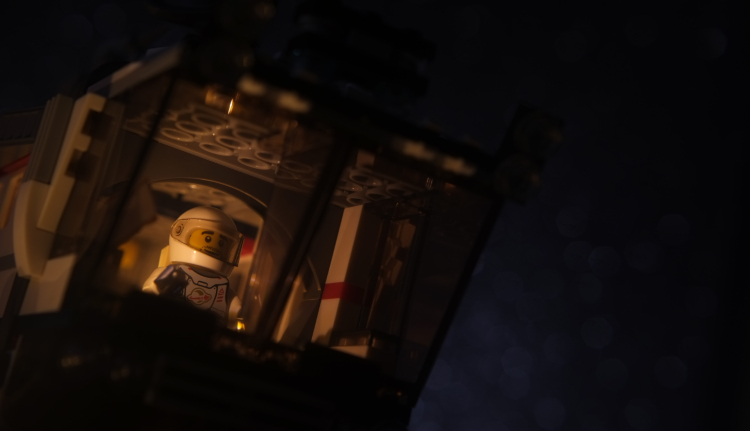
The mood of Ultima Thule, the final place or border, is very noticeable in this set. I can see this vehicle in my imagination, traveling alone through unknown reaches of space and on foreign planets light years from Earth. Like in Interstellar, I think of being a great distance from home and feeling total solitude in the vastness of space.
The lone ranger
The astronaut minifigure looks well prepared to deal with an unknown environment. The space suit, printed on the torso, seem to be very solid. It’s also decorated with the LEGO space series logo: a spaceship orbiting the planet. The logo, however, looks more futuristic—after all, the astronauts from the space series have been discovering space for 40 years. And because of this logo, I decided the photos for this review would be in the style of those from the classic space packaging.
Despite the fact that the astronaut is alone, he looks straight ahead with a smile, or even two smiles!
The lone hab
I started building this set in a different order than the instructions suggest, namely from the inside. I decided that the base, the shelter, was the first thing our brave pioneer needed.
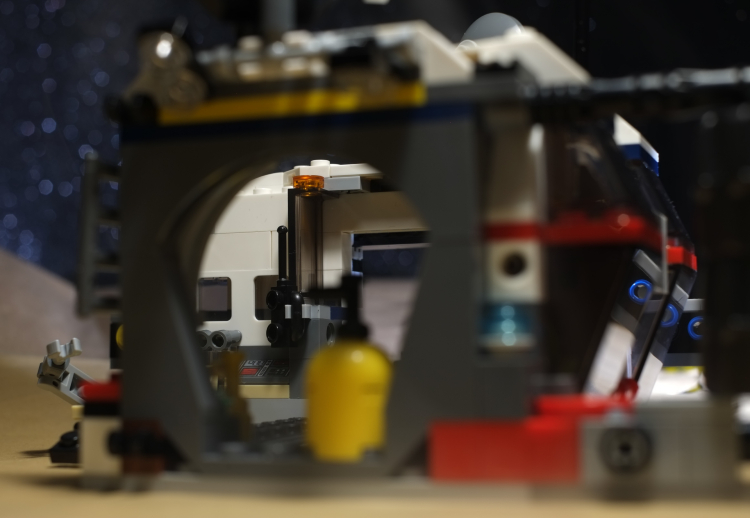
The base is a squat, compact building that is supposed to withstand the often extremely inhospitable conditions of foreign worlds. It features a well-designed sliding entry door that is as science-fiction as a science-fiction space base door can be. I could hear the characteristic whistle of compressed air and vapors from the airlock in my mind while opening and closing the door. The cramped, though cozy interior, filled with research equipment indicates that the base is to be used for the study of alien fauna, as well as researching the effects of space conditions on terrestrial flora in a glass habitat. After research, plants probably also serve as food for the astronaut.

The yellow mug gives a bit of life to this sterile interior. Because how else to write more reports for the headquarters on Earth, if not with a cup of delicious coffee? The base is equipped with a powerful communication system in the form of three antennas. These gigabytes of data must be sent to Earth quickly and efficiently after all. The power supply is a mysterious construction made of wheels. Maybe it’s a system of windmills, driven by a planet’s gusty winds.
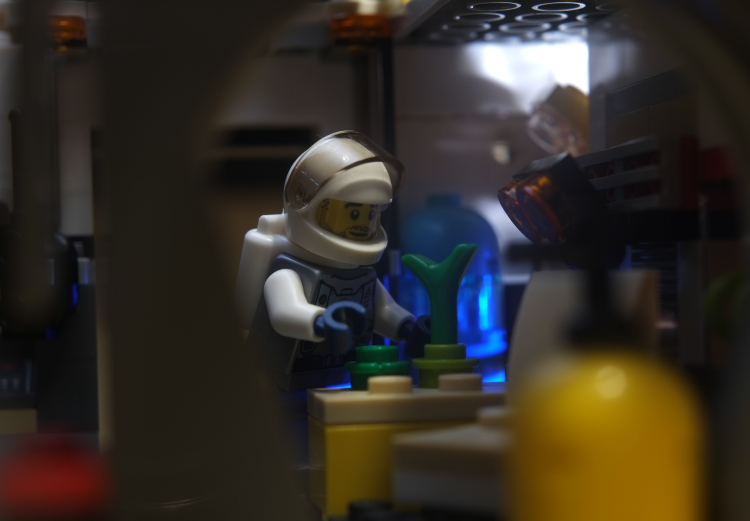
This alternate build comes with a quite scary looking insectoid alien with pedunculate eyes.

Our astronaut has enough tasks and worries without dropping more hostile aliens on him. So for the purposes of this review, I decided the alien fauna won’t cause more problems than drinking astronaut’s coffee.
I am glad that this set includes such a model, because I missed such interiors for taking photos. The only thing I miss in this building is a solid roof that would deepen the impression of the hab’s enclosed space.
The lone craft
The second model in my order was the last in the building instructions: a spacecraft. In this model, attention is drawn to the strongly protruding wing elements, shaped like the letter U.

The vessel’s dimensions, as well as the shape and glazing of the cabin suggest it is a patrol ship. I really like that LEGO does not take shortcuts on this ship, giving ready-made wings or a tail. Both of these elements are simply built of bricks! This is common with fan-built MOCs (My Own Creations).
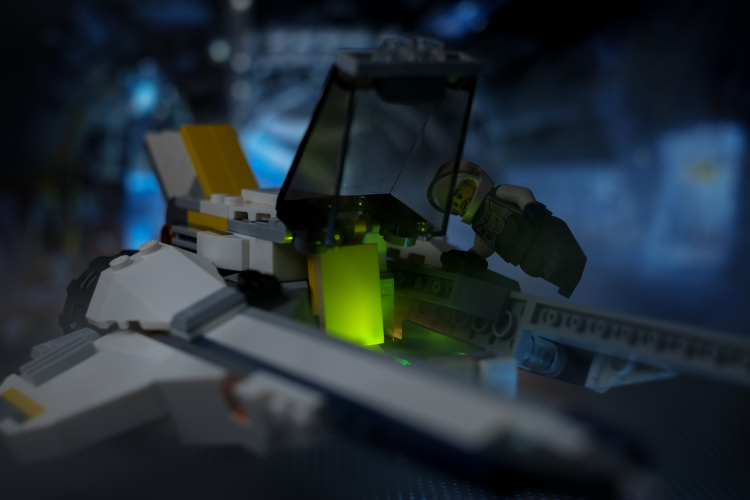
Such solutions are the hallmark of the Creator series and it’s a very attractive feature for me. The tail of the Space Shuttle Explorer set [31066] is similarly constructed.

The ship has a shapely, fast construction that really pleases the eye and allows for cool photos from different angles, although setting up this ship for photos is a real challenge because it requires balance.
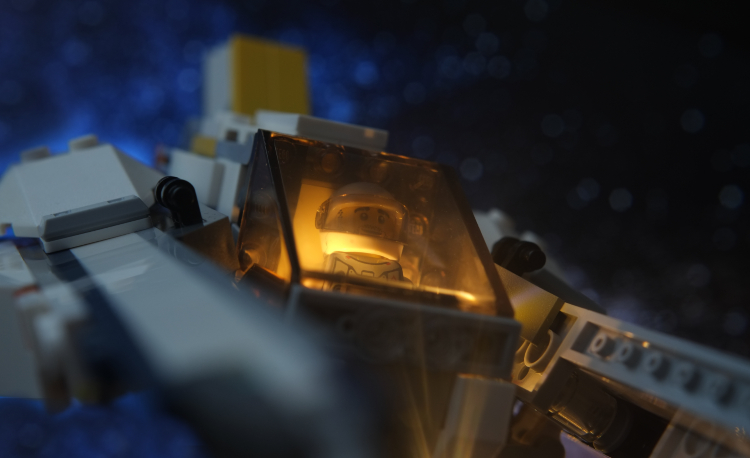
The lone rover
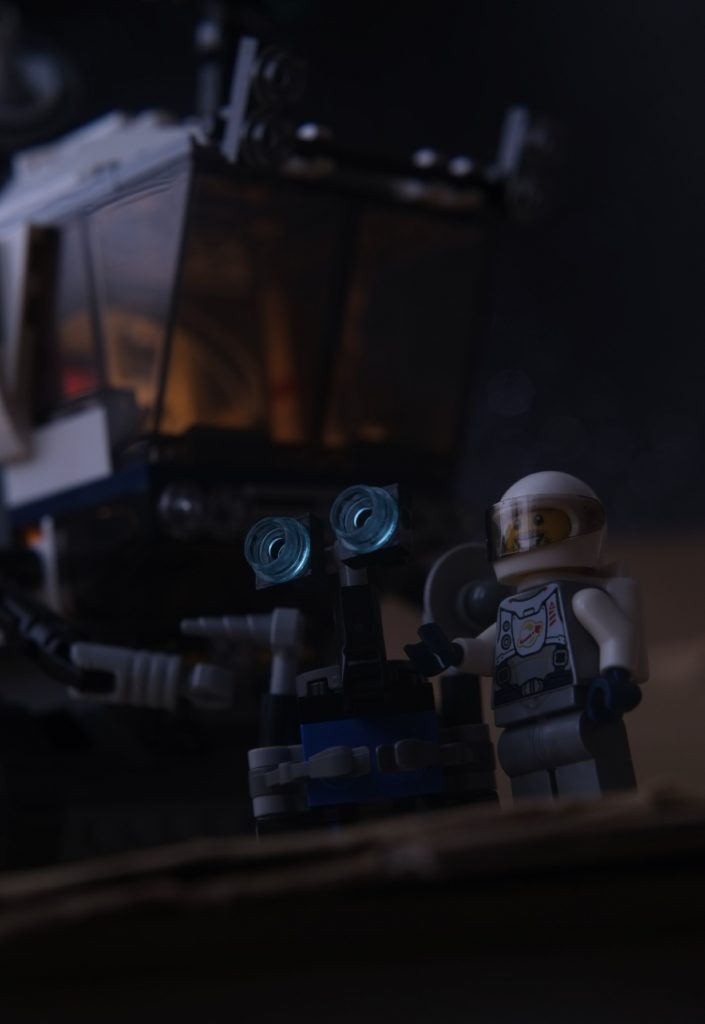
I left myself the creme de la creme for last—the space rover explorer itself. I really like everything about this vehicle, starting with the solid axle suspension that works beautifully on uneven surfaces. Strange as it may be, I really like the openwork wheels, which are supposed to look like they are made of metal or some other material, but not rubber. In addition, it is amazing how one gray round plate, one gray ingot and one yellow plate underneath, can perfectly complement the design of this suspension and give it a high-tech look.
The six wheels carry a perfectly designed body: massive, glazed and protruding front and main body, along with a loading ramp with a crane at the rear. The rover is rich in details, from solid lighting gear to various antennas, sensors and tools, and two decent tanks.
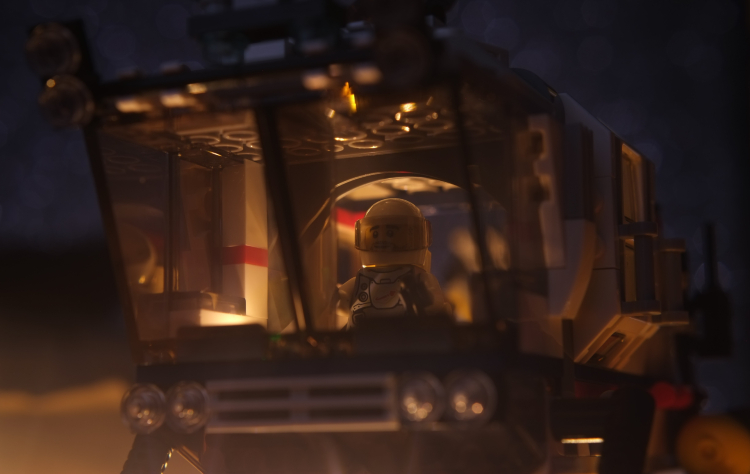
At the beginning I kind of lied a little that the astronaut is alone. He has a companion who, like the rover, also moves on six wheels: the robot. This funny machine is somewhat reminiscent of WALL-E due to the design of optical devices [I just wanted to write “eyes”!]. The robot is designed for drilling and testing samples. The drill, antenna and grippers make the robot a very useful helper.
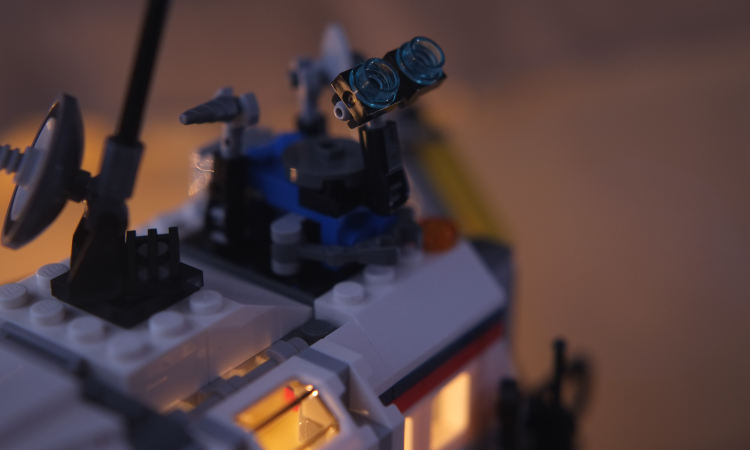
The absolute hit, however, is to use the window 2 x 6 x 2 train front/boat part as a rover hatch. This part gives this vehicle great character and hard science-fiction vibe. I also like the colors, whether intentionally or not, referring to the colors of the classic spacemen: white, red, blue and yellow.

Of course the green, alien, color is also present in this model—this time in the form of a specimen with six legs and eyes on the pistils [clever use of plant grass stem as a petiole]. This time I decided that the alien life form would be neutral toward humanity at worst.
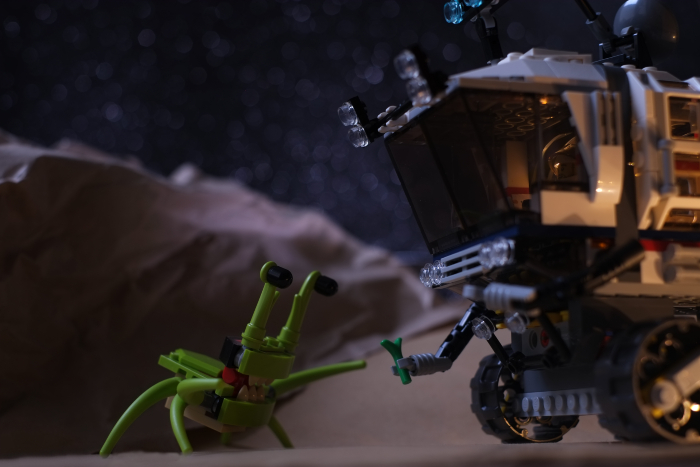
Despite this, the astronaut will not invite a stranger into the interior of the vehicle, which is quite cramped but allows you to mount a variety of stuff inside, including the obligatory coffee maker! Because, as you have already guessed, conquering space is impossible without good coffee!

Overall impressions
Space Rover Explorer is a really well-designed set. And although the main model steals the show, the alternative builds are also very interesting and look good in front of the lens. In addition, this set brings a large dose of stardust and nostalgia through references to classic space series.
Howdy! While you’re here, we invite you to sign up to our weekly email roundup where you’ll get a recap of all the week’s babbling. And while you’re at it, you should definitely join our MeWe community! We hold monthly contests with prizes and lots of other cool stuff, too.



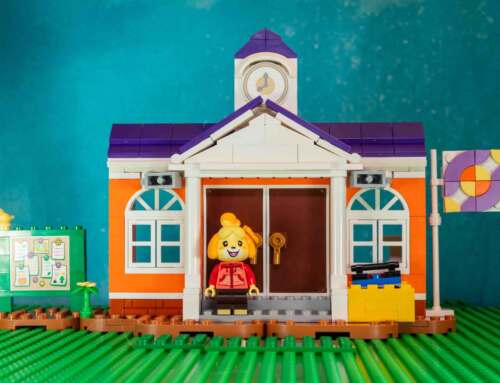
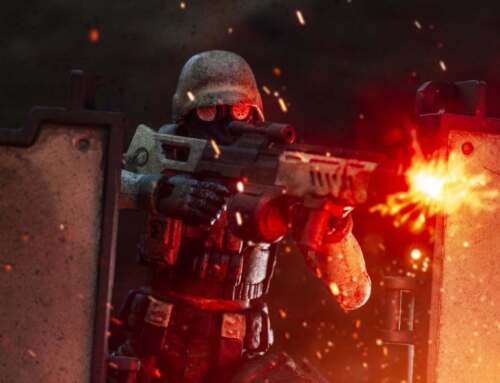
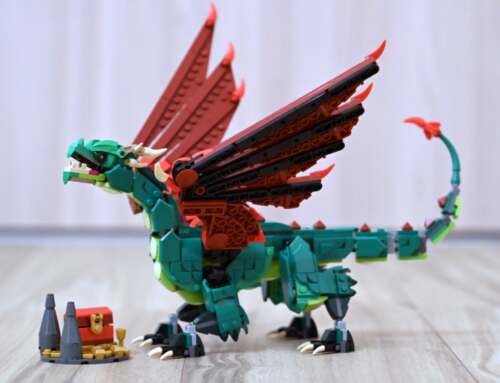

Love the review and photos, Tomasz. I’ve always had a soft spot for moon buggies, and this set is tops on my list. Can’t wait to get it (along with the green alien) in front of my lens. Will go perfect with the LEGO City Space sets! Cheers!
Such a cool set. I must have missed this one, had no idea they had a space-themed 3-in-1 set! There’s definitely a lot of photo opportunities with these options. Great review, Tomek!
Ok – Im sold! I love this review Tomasz! You gave me not only stunning photos of the set (love what you did with the lighting) but you gave me a story to hold my interest. Excellent job! I cant wait to see what you review next. I know it will hurt my pocket book – but still, I cant wait!
This looks so cool! Love the interior lighting, Tomek!